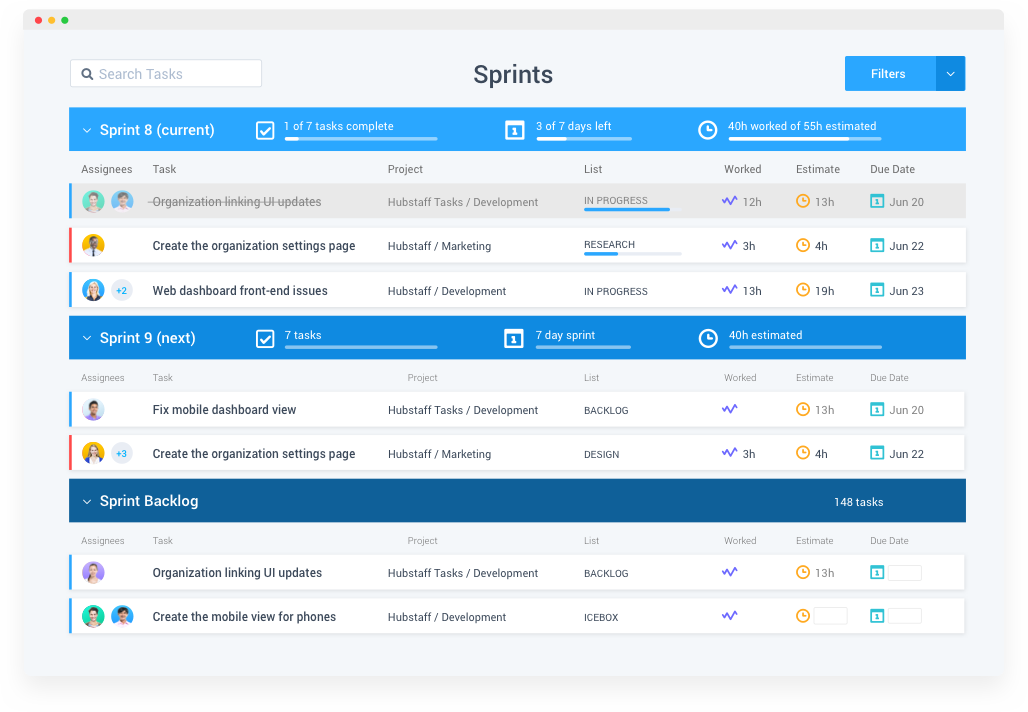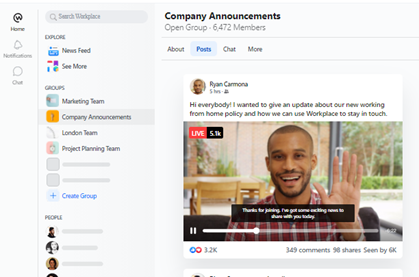How to Get Your Freelancers to Turn In Projects On Time
There are numerous benefits to hiring freelancers. Gaining specific skill sets without having to bring on a full-time employee is just one example. In the 2020 report on the effects of the pandemic on remote work, freelancing is more popular than ever.
But as a manager, there are challenges. Once you’ve found your freelancers, you need to manage them effectively.
That means tracking their hours, communicating about projects and — the biggest challenge — managing deadlines.
Wondering how to make it happen? Here’s how to get your freelancers to turn in projects on time.
1. Create reasonable deadlines
As a manager, it’s your responsibility to create reasonable deadlines. Leaving everything until the last minute and then dumping a 24-hour turnaround on your freelancer is asking for trouble.
A better way to manage your finances
With Hiveage you can send elegant invoices to your customers, accept online payments, and manage your team — all in one place.
If tight deadlines are placed on your team for you to hit, try to push back and set reasonable expectations. Here’s how:
- Organize tasks in order of priority, so your freelancer is only working on key milestones. When managing freelancers, it’s important that you prioritize tasks. Giving your freelancer an overview of what’s coming up in the month is also helpful as they will be able to block out time and balance other client projects.
- Document deadlines clearly via email or within your project management system. Be sure that everyone understands the deadline and is able to meet it.
- Respect the timezones and holidays of your freelancers. For example, if you’re in London and expecting a fast turnaround from a freelancer in Australia, it’s possible that communications won’t overlap. Deadlines might be missed.
- Understand the time it takes to complete tasks. For example, in 2020, the average time it takes to research and write a blog post is 4 hours. Failing to allow your freelancers time to properly complete work will result in one of two things happening: missed deadlines or unsatisfactory, rushed work. If you don’t have direct experience, ask how long it is likely to take to complete a project and build that into your timeline.
- Know that you’re probably not the only client your freelancer has. Unless you have your freelancer maxed out, it’s likely they are working with other clients and have other deadlines. Some freelancers may juggle several projects at the same time to reach a certain target income every month. Unless your project is the one offering the most regular work, it may not be a high priority.
“The best way to encourage productivity is to encourage individuals to take ownership over how they manage their own time and resources. Granting workers freedom over when, how, and where they work creates proof of their work ethic in a way that trying to control them cannot.” Robby Slaughter, Productivity Expert
2. Take time to provide a detailed brief
Experts advise that 10-12 minutes invested in planning your day will save at least 2 hours of wasted time throughout the day. While this can’t be said for every professional, it’s certainly true for managing freelancers.
When briefing freelancers on writing projects, include the following information:
- Title and overview of the piece
- Style and tone guides
- SEO keyword(s) to use
- Any links for research or articles you like
- Internal pages to link to, or source from
- The purpose and CTAs for the article
- Where it will be placed
- And that all-important deadline
Of course, the items will depend on the project and nature of work, but you get the idea.
Writing a brief usually takes anywhere from ten minutes to an hour but saves so much time in the long run. It also provides the freelancer with the information they need and the deadline to work toward. It ensures they understand the complete scope of work.
Encourage your freelancer to ask questions when they receive the brief. This can prevent hold ups or confusion later on.
Did you know that Automattic, Buffer, Edgar, Groove, Ghost, InVision, Hubstaff, Doist, and Zapier are among the companies that equip 100% remote teams?
3. Use project management software
When you’re working with freelancers, it’s essential that you use a task management tool. Many PM apps will help you manage a multitude of projects, tasks, and deadlines. Using software like Hubstaff also allows you to integrate billing and time tracking so your freelancers can manage everything from one place.
- Hubstaff Tasks uses visual Kanban boards to streamline workflows, Sprints to focus teams, and automated Stand-ups to keep everyone in sync. Here you can manage all of your work, create checklists, add due dates and organize all of the relevant task details.

- Evernote is a multipurpose task management and note-taking tool. It allows you to jot down notes, brainstorm ideas, add visuals and share documents with freelancers. It also facilitates reminders and tasks.

- Trello is a fun and easy list-based management tool. Here you can easily create boards and cards for freelancers and clients, which are great for project management, communication, and ideas.

- Facebook Workplace is a communication tool that connects companies and remote workers. It uses familiar features like Groups, Chat, Rooms and Live video broadcasting to get people collaborating. A word of caution though, with many people deleting or choosing not to use Facebook, this isn’t always a workable solution.

- Calendars – While it’s unlikely that your freelancer will want to share a calendar with you (if they are working with other clients), it is important to utilize calendar reminders. Avoid insisting that your freelancer use a calendar system they are not normally working with as this will simply get ignored. If they are using Outlook, Google or Calendly, you can add reminders there. Set a reminder a day before the deadline to avoid a last-minute rush.
4. Leave a buffer
Smart managers leave a buffer when assigning work to freelancers. To do this, you need to work back from your deadline and figure out the steps that are needed.
Let’s look at an example: A press release that’s due on October 10.
Assign it on September 10 with a deadline of September 24 for the freelancer to research and write it. Then, you have 2 weeks to proof it, request changes, get approval, create images, and send the PR to the media outlet prior to the deadline.
Of course, we don’t always have this much time, but the same principle applies. Always leave a buffer.
Your deadline should never be the same as the one you give your freelancer.
“A good rule of thumb is to estimate how much time something will take, and then multiply by either one-and-a-half or two. Having a buffer for incidentals will save you from missing your deadlines and spending evenings and weekends working to catch yourself up.” Shopify Expert, Kelly Vaughn
5. Pay freelancers promptly
One thing’s for sure. Freelancers perform better and faster when they know they will be paid promptly. Brands who take too long to pay or worse, ignore emails about payment will never be a priority for freelancers.
Here’s how to be the one they hit deadlines for:
- Always acknowledge emails asking about payment, even if it isn’t your department. Respond and follow up with accounts.
- Maintain a contractor’s agreement. Your freelancer or contractor agreement can lay out expectation terms and payment details. For example, work that’s submitted past a deadline may be subject to payment penalties. A nicer way to look at this would be to offer a bonus for great work delivered early.
- Pay freelancers promptly. If you can pay them faster than 30 days, great. Never underestimate the importance of a payment, however low it may be. Remember, freelancers often rely on your payment for essentials like bills, food, and fuel.
- Pay equally. Female freelancers make less money than male freelancers. A SlashWorkers study has shown that while women make $25,000 on average, men can go over $150,000 a year for the same position. Don’t be that employer.
- Advise them to use online invoicing: Having your freelancers bill you with online invoicing software offers so many advantages for you with respect to being able to track, manage and instantly pay invoices. For them, it means they can always issue professional, clear and timely invoices that integrate with your preferred payment options.
- Encourage your freelancers to be efficient. Explain your corporate billing system at the start of your working relationship. For example, if your payroll is always done on the 5th day of the month, explain that invoices sent after this will be delayed until the following month. Ensure they know how to send an invoice and to whom.
Did you know that 77% of freelancers state they are not more financially stable since ditching their day jobs to go freelance. But 68% say their life has improved since they started freelancing and are much happier than before.
Getting your freelancers to turn in projects on time starts with you. The way you communicate, document and incentivize freelancers is key to hitting deadlines.
Each freelancer is unique and will work in a different way. But implementing great practices is something you can roll out internationally.
This article has been contributed by Hubstaff.
Join thousands of business-savvy entrepreneurs on our mailing list.
Curated emails that’ll help you manage your finances better.




